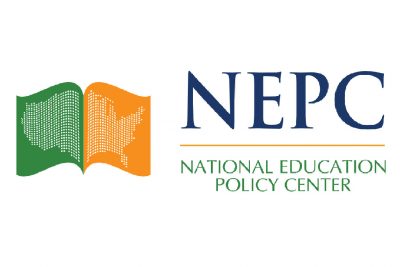
Editor’s Note: The following piece originally appeared in the National Education Policy Center’s July 2019 newsletter.
It was a chilly day in December of 1965 when 13-year-old Mary Beth Tinker walked into Harding Junior High School in Des Moines, Iowa with a black armband on her sleeve.
The bands, which were also worn by Tinker’s 15-year-old brother John and other local students, were a silent protest against the Vietnam war, an effort to mourn those who had been killed in combat and to call for a Christmas truce.
One of the student protestors, Christopher Eckhardt, was threatened by members of his high school football team. But Mary Beth’s day passed largely without incident until she showed up in her afternoon math class. Her teacher, Richard Moberly, had warned the students not to wear the bands in class. He promptly sent her to the school office, where she was so intimidated that she removed the band. She was suspended anyway.
It was a moment destined to make history.
When the school board affirmed the band ban, the Tinker and Eckhardt families filed a law-suit that was eventually considered by the U.S. Supreme Court.
2019 marks the 50th anniversary of that landmark case, Tinker v. Des Moines School District, where Tinker and the other plaintiffs prevailed.
In the Q&A below, National Education Policy Center Fellow and University of Connecticut professor Preston Green III explains the significance of the case, tracing its implications to modern-day student speech issues (like those related to social media) that the 1965 Court could not have foreseen.
Green is the John and Carla Klein Professor of Urban Education at the University of Connecticut’s Neag School of Education. He is also a professor of educational leadership and law at the University of Connecticut. With a J.D. from Columbia University School of Law and an Ed.D. from Teacher’s College, Columbia University, Green is an expert in the legal and policy implications of educational access and school choice. Along with Joseph O. Oluwole, Green is the author of a 2015 law review article exploring students’ first amendment rights in the digital age: “Virtual Schools, Student Rights, and the First Amendment: Adjusting the Schoolhouse Gate to the 21st Century” appeared in the North Carolina Journal of Law & Technology.
Q: At the time, what was the significance of the Tinker case?
A: The Tinker case marked the first time that the Supreme Court addressed whether the First Amendment applied to speech by students within public schools. The Court ruled that a school district violated the First Amendment by suspending students for wearing black armbands in protest of the Vietnam War. In reaching this decision, the Court ruled that public schools could not censor student speech unless it “materially disrupts classwork or involves substantial disorder or invasions of the rights of others.”
“The Tinker case marked the first time that the Supreme Court addressed whether the First Amendment applied to speech by students within public schools. The Court ruled that a school district violated the First Amendment by suspending students for wearing black armbands in protest of the Vietnam War.”
— Professor Preston Green
Q: How have subsequent cases such as Bethel v. Fraser, Hazelwood v. Kuhlmeier, and Morse v. Frederick shaped student free speech rights?
A: Although the Tinker case proclaimed that students “do not shed their constitutional rights at the schoolhouse gate,” the Court cautioned that this right must be balanced against the legitimate interests of school officials in the safe and orderly conduct of schools. In subsequent student free speech cases, the Supreme Court has applied this balancing test to limit the free speech rights of students.
For example, in Bethel, the Court ruled that schools could discipline students for lewd and indecent speech because of their responsibility to teach students how to behave in a civil manner. In Hazelwood, the Court ruled that schools could restrict school-sponsored speech because of their legitimate interest in controlling the curriculum. Finally, in the Morse case, the Court upheld the suspension of a student for displaying a banner supporting drug use.
Q: How are student speech issues now different from the immediate post-Tinker years, and how have courts addressed cases involving students’ speech on social media or other online platforms?
A: The Supreme Court’s cases only addressed on-campus speech. These cases were completely silent on the topic of off-campus speech. This is important because a great deal of student speech occurs on the Internet. School districts have suspended students for, among other things, “liking” racist Instagram posts, for posting pictures of a school’s discolored water on Facebook and Twitter (this suspension was subsequently reversed), and an arguably lewd tweet criticizing a school district for the failure to shovel snow.
In the absence of Supreme Court guidance, federal appellate courts have developed an array of tests to analyze off-campus regulations of student speech. A recent law review article summarizes the various approaches in the following manner:
The Second, Seventh, and Eighth Circuits apply the foreseeability threshold [the ability to reasonably anticipate the possible results of an action] to the Tinker test [which balances student free speech rights with the legitimate interests of school officials in the safe and orderly conduct of schools.] The Third Circuit also applies the foreseeability threshold to Tinker, but tweaks its test to focus on the student’s intent. The Fourth Circuit applies a “sufficient nexus” threshold [i.e., an examination of the nexus between the speech and the school] to Tinker, while the Eleventh Circuit applies a “true threat” test [which aims to determine whether there is serious intent to do harm], in addition to a traditional Tinker analysis. The Ninth Circuit declines to apply any of these approaches and extends Tinker only when faced with an identifiable threat of school violence, while the Fifth Circuit’s approach is flexible to accommodate the specific facts before it.
Until the Supreme Court issues a ruling on the application of the First Amendment to off-campus speech, this hodgepodge of approaches will continue.
Q: How do you think Tinker might be decided today if reconsidered by the current Supreme Court?
A: I suspect that the Roberts Court would have ruled in the same manner had it decided Tinker today. In a 5-4 decision, I could see Chief Justice Roberts siding with the liberal wing of the Court, but being very careful to note that the students’ rights had to be balanced against the concerns of school districts.
Q: Fifty years from now, what do you think student free speech rights might look like?
A: I suspect that the Supreme Court will have developed a standard to address the application of the First Amendment to online speech. I also think that the judiciary will continue to struggle to keep up with advances in technology.
The NEPC newsletter is made possible in part by support provided by the Great Lakes Center for Education Research and Practice.
The National Education Policy Center (NEPC), housed at the University of Colorado Boulder School of Education, produces and disseminates high-quality, peer-reviewed research to inform education policy discussions.
 Facebook
Facebook
 Twitter
Twitter
 LinkedIn
LinkedIn
